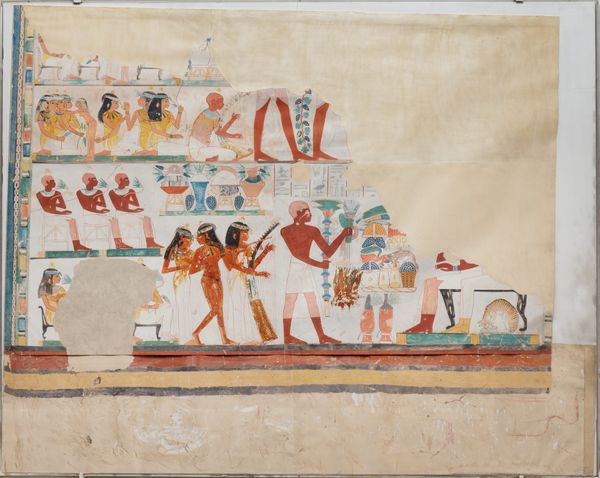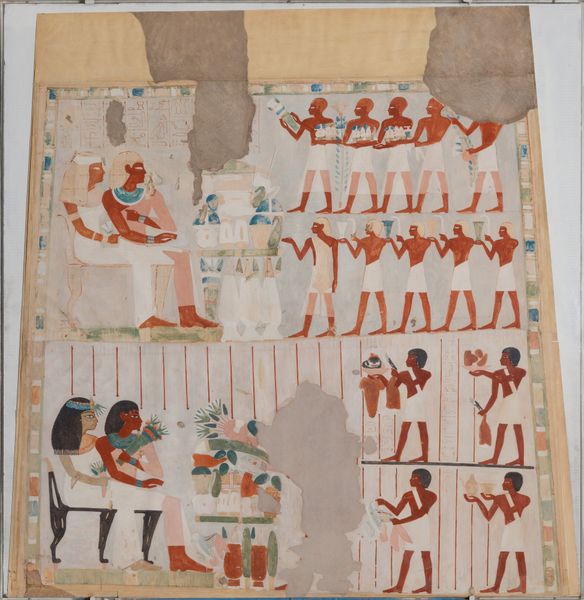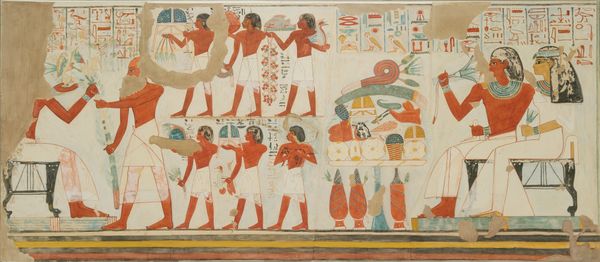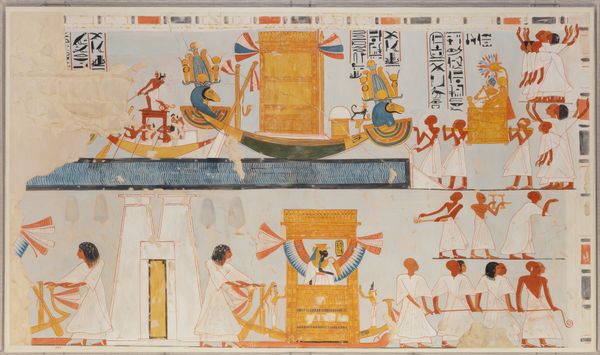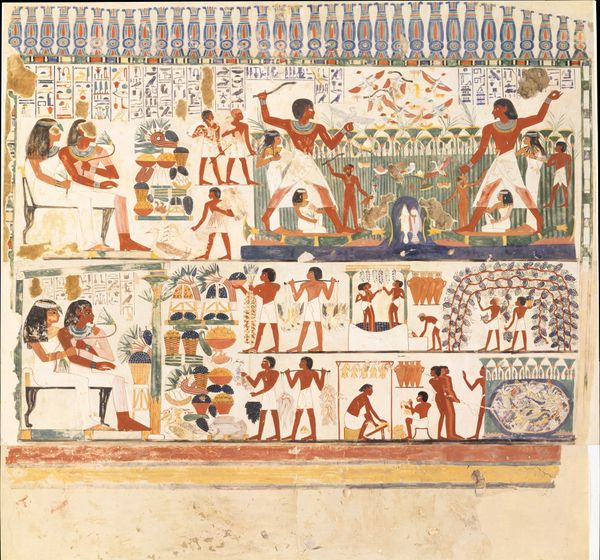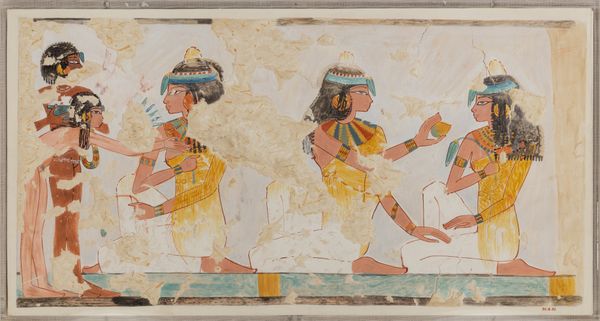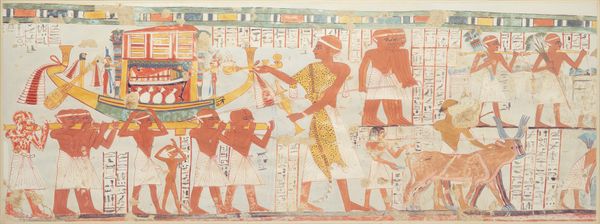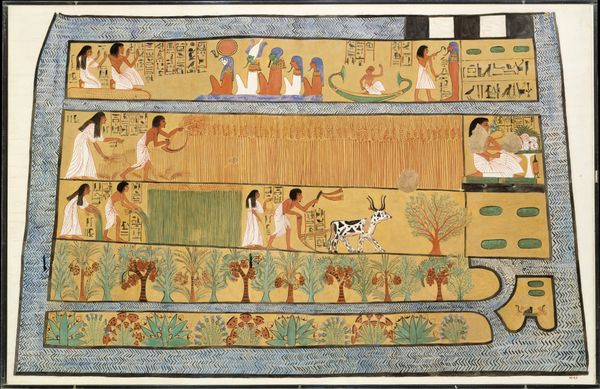
tempera, fresco, mural
#
portrait
#
water colours
#
narrative-art
#
tempera
#
ancient-egyptian-art
#
figuration
#
fresco
#
egypt
#
ancient-mediterranean
#
group-portraits
#
history-painting
#
mural
#
mixed media
Dimensions: Facsimile H. 64 cm (25 3/16 in); w. 75 cm (29 1/2 in) scale 1:1 Framed H. 64.1 cm (25 1/4 in); w. 76.2 cm (30 in)
Copyright: Public Domain
Curator: Let’s turn our attention to "Funerary Equipment, Tomb of Userhat". This tempera and fresco fragment, created around 1294 BC by Norman de Garis Davies, offers a glimpse into ancient Egyptian funerary practices. Editor: It's incredible to think about how long this image has endured. Even in its fragmented state, there is an undeniable sense of solemnity and preparation. The colors, despite their age, are still striking. Curator: Absolutely. It’s fascinating to see the level of detail preserved, isn't it? What's presented here reflects very specific ritual roles in preparing Userhat for the afterlife. These depictions served to ensure his successful transition and continued existence in the world beyond. Editor: Precisely. Note the uniformity of the figures. Each wears similar regalia, yet their expressions and headdresses hint at individuality and status, like visual cues in the theater of death. Are those the Canopic jars I spot above them? Curator: Indeed. Canopic jars for organ storage. These images carry very direct, deeply significant symbolism. But the larger context also must acknowledge this was from the tomb of Userhat, a royal scribe; consider how this imagery legitimizes the status of a particular class. Editor: True, that cultural reinforcement cannot be discounted, as these representations did influence and dictate how individuals viewed the world, then and perhaps still today. But what lingers for me is this depiction of ritual: timeless preparations for a journey we all undertake, surrounded by objects of power, reverence, and ultimately, acceptance. Curator: I agree; the careful representation, as an artifact but also an instrument of societal and political cohesion, has stood the test of time, giving us insights not just into artistic techniques, but how societies perpetuated power structures and ideologies around death and the afterlife. Editor: The enduring power of imagery, even in fragments, allows these voices of the past to speak to us still, with secrets we perhaps haven’t yet begun to unravel.
Comments
No comments
Be the first to comment and join the conversation on the ultimate creative platform.

